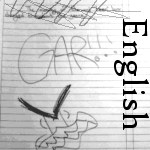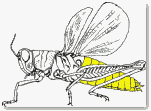Noun: Singular & Plural
Seeing that nouns are items, there can be one or more and this means that nouns are either singular or plural. Singular means there is one, plural means there is more than one. Even a fraction more that one means the noun is plural. That is commonly seen in recipes—1 1/2 cups milk. And here is a kicker to that so called "less than one" —If the item is a zero or a decimal version of less than one it gets the plural treatment. "The scientist measured 0.2 ounces of water and placed it into the test tube that previously contained zero ounces of anything." This does not apply to the 1/2 teaspoon of sugar that the scientist added to his tea.
Ways to show the number of a noun.
- Add s to the singular form of the noun. - cups, cakes, heaters [ rules ]
- Add es to the singular form of the noun. [ See below for the rules ]
- Change the spelling of certain words. [ examples ]
Note, some words do not change at all [ examples ] - Non-possessive plural nouns can receive 's or not. [ "rules" and reasons for exceptions ]
Common Examples of the Plural and the Possessive Case of Nouns
| Regular | Irregular | |||
| singular | boy | fox | goose | child |
| singular possessive | boy's | fox's | goose's | child's |
| plural | boys | foxes | geese | children |
| plural possessive | boys' | foxes' | geese's | children's |
(Although plural refers to nouns, the rules for adding s or es apply to verbs also.)
Hyphenated words-
daughters-in-law, sons-in-law
Form the plural of most nouns by adding s to the singular
- if the word ends in a vowel-y (keys)
- to words ending in vowel-o
- to some words ending in consonant-o (memos, autos, pimentos, pros) (see "es" for exceptions)
- to most words ending in f (see "es" for exceptions)
- to words ending in silent e
Adding s to Compound Nouns
Add the s to the end of most compound nouns.
Examples: cease-fires, cupfuls, six-year-olds, standbys
SOME compound nouns contain a word that seems more important that the other words. The important word should be pluralized.
Examples: sons-in-law, attorneys general, sergeants-in-arms, courts martial, passersby
It is best to look up words in the dictionary to find the plural forms.
Add es to singular nouns ending in s, ch, sh, x, or z …
- … if the noun ends in s, ch, sh, x, or z (churches, watches, ashes, Rogerses)
- … if the noun ends in consonant-y, change y to i and add es. (baby-babies)
- … to some one syllable nouns ending in a single f or fe: change f or fe to v when you can hear the v sound in the plural form, then add es (Verb forms don't usually change.) leaf: leaves (noun) leafs (verb)
- … to some words ending in consonant-o: echo, potato, tomato, hero, veto, torpedo
The plurals of proper nouns are formed using the same rules as above [for s and es], except do not change the spelling.
one James - two Jameses, one Holly - two Hollys, the Youngs, the Davises, the Grinches
Change the spelling of some words, rather than adding s or es.
- foot - feet
- child - children
- louse -lice
- man - men
- tooth - teeth
- ox - oxen
- mouse -mice
- goose -geese
- woman - women
- analysis - analyses
- alga - algae
- medium - media
- alumnus - alumni
- curriculum - curricula
- criterion - criteria
- larva - larvae
Some words are the same for both the plural and singular form.
aircraft, barracks, deer, sheep, species, moose, bison, swine, grouse, fish*, salmon, pike, trout, etc
*Fish- There are some uses for the word fishes.
When Does Apostrophe-s Show Plural but Not Possession?
Apostrophe s is added to form the plural of items being discussed. But sometimes only s is added.
Apostrophe s is added to form the plural of items being discussed. But sometimes only s is added.
- lower-case letters
- numbers
- symbols
- abbreviations
- words being discusses as words
Of course if you get a job with a newspaper you need to check their style specifications regarding when one may add apostrophe s to show plural.
*entities of authority
I'm referring to books, tests, instructors, and bosses.
Below I am going to go over some contentious points about using apostrophe s to show plural. Some points are in a phase of change, meaning, some *entities of authority still use apostrophe s in certain cases to show plural while others do not.
Examples: Letters
His f's were like b's and his 8's were like 3's.
Contentious Point: Adding 's to numbers to show plural is considered old fashioned by some but not everyone. The sentence could also be written like this: His f's were like b's and his 8s were like 3s. My question would be—Is it good style to omit the apostrophe from the numbers while using them on letters in the same sentence/paper? After all consistency in your essay leads to the reader's comprehension. In other words, do not make your reader pause over inconsequential items like apostrophe use. What if you wrote the sentence using no apostrophes.
His fs were like bs and his 8s were like 3s. <- Is that unclear. Does "bs" seem like something unsuitable for a paper? I'd say yes, it seems wrong to leave off the apostrophe in "bs." So now we are back to adding 's to the letters and the numbers -- maybe. If you were my student, I'd say to use the apostrophe s to show plural on both numbers and letters [with exceptions] in your entire paper. A different *entity of authority might have a different requirement.
John earned two Ph.D.'s [Note the periods] John earned two PhDs.
He made straight A's.
[without 's > He made straight As. And one might ask, "Straight as what?"]
Exceptions occur when there will be no confusion
dos and don'ts [note the italics]
IQs [note the lack of italics]
the three Rs [note the lack of italics]
Examples: Words
She had too many very's in her paper. [note the italics]
Contentious Point: Must very's be italicized? I do not know.
She had too many verys in her paper.
Contentious Point: The apostrophe can be omitted if the sentence remains clear. Do you think the second sentence is clear?
Underlining and Italics
When underlining the letters, signs, and figures, do not underline the 's. [ A's ]
When using italics, there is no need to underline. [ A's ]
But do you have to do one or the other? I don't know.
What about Years & Numbers?
In the past and even now, the 's was used with a year such as - 1950's. BUT now you do not have to add the 's as long as you remain consistent throughout your paper UNLESS the entities of authority require the use of 's. If you write 1800s at first, be sure to leave off the apostrophe in all remaining decades [1900s, 2000s, etc]. The same goes for numbers: 9s, 10s, 20s, but stay consistent. At the same time, this is still a contentious point. For instance a college entrance exam might prefer 1900's over 1900s, but how will you know?
Hello Visitor!
I am currently working on this website to add to its ginormousness. Thank you for visiting, and please subscribe yearly to access my many printable files! Donna Young
May 13, 2021

 Donna added an English index
Donna added an English index  What does Beta Mean regarding the V Planners?
What does Beta Mean regarding the V Planners? Printable Files and Quiz
Printable Files and Quiz


